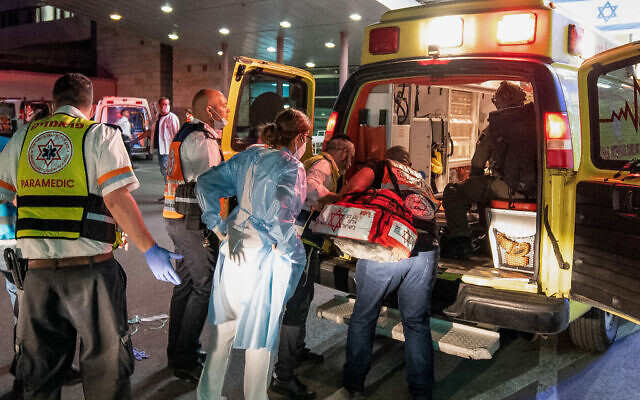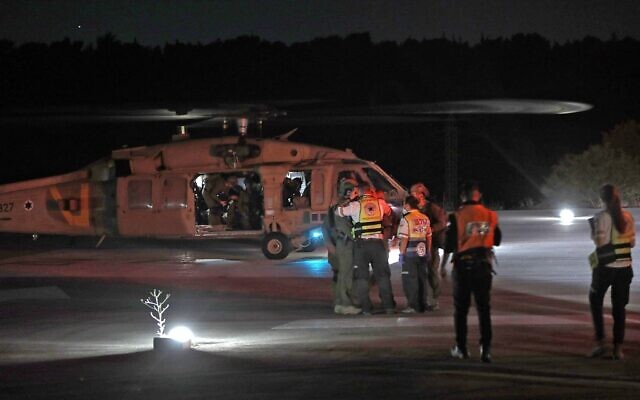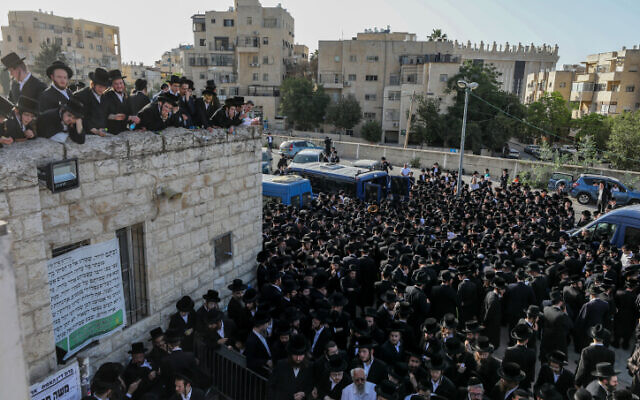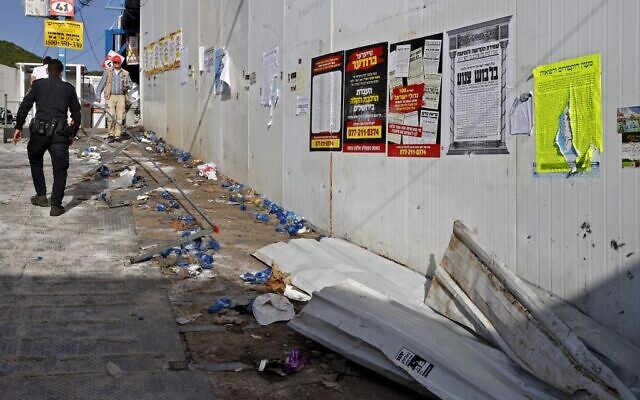Rambam Medical Center in Haifa says child has been taken off ventilator and is no longer sedated; identification of fatalities set to resume Saturday evening

Sixteen people remained hospitalized on Saturday after the deadly stampede at Meron, with a number of them in critical or serious condition.
However, there has been an improvement in the condition of an 11-year-old boy who was seriously injured, the Rambam Medical Center in Haifa announced.
A spokesperson for the hospital said the child was sedated and put on a ventilator when he arrived at the medical center on Friday, but has now regained consciousness. His condition has been upgraded to moderate, they said.
The boy, who wasn’t named, is from the central city of Bnei Brak.

The hospital said three other people injured in the crush remained in their intensive care unit and were still sedated and on ventilators. Those injured in the stampede were taken to a number of hospitals around the country.
With 45 dead and dozens injured, the disaster in the early hours of Friday is believed to be the worst peacetime tragedy in Israel’s history, surpassing the death toll of 44 from the 2010 Mount Carmel forest fire.
There have now been 32 victims identified at the Abu Kabir Forensic Center in Tel Aviv.
The institute halted the identification process on Friday evening, following a ruling from the chief rabbi that it could not continue on the Sabbath. It was set to resume on Saturday evening.
Funerals for 13 of the victims were held Friday, after their bodies were released for burial.

More than 100,000 people were attending the annual gathering in the northern Galilee, which includes visits to the gravesite of the second-century sage Rabbi Shimon Bar Yochai and massive bonfires on the mountainside.
A bonfire lighting ceremony for the Toldot Aharon Hasidic sect was being held at the pilgrimage area, close to Bar Yochai’s tomb.

As the dense crowds began to exit, a narrow, sloping walkway on the exit route became immensely congested, people slipped on the metal floor and others fell on them, precipitating a stampede and fatal crushing, exacerbated by a reported police barrier at the bottom of the incline.
Pictures from the scene showed bodies covered in blankets and bags as well as the personal effects and shoes of those trapped in the crush.
As the initial shock and horror over the deadly crush began to subside, focus started to turn on Friday toward the matter of who was to blame for the packed conditions at the site and the security dangers. Two state comptroller reports highlighting that the Mount Merom site was radically unprepared for the huge numbers attending the annual festivities, in 2008 and 2011, were ignored, as was a 2016 police report that sounded similar warnings.
The site, the second most visited religious site in Israel after the Western Wall, appears to have become a kind of extraterritorial zone, multiple reports indicated Friday, with separate ultra-Orthodox sects organizing their own events, and their own access arrangements, no overall supervision, and police routinely pressured by government ministers and ultra-Orthodox politicians not to object.
A framework drawn up by Health Ministry officials, police and other government officials to restrict this year’s event to 9,000 participants was agreed by all parties, Dr. Sharon Alroy-Preis, the Health Ministry’s head of public medicine, said a day before the event. But it was not put into place, she said, “because no one would take responsibility for enforcement.” The agreement was not brought to the government for approval because of infighting among ministers on other matters, including a major dispute over the appointment of a justice minister.
Stark questions will likely be directed at political, civil and law enforcement officials involved in planning, approving and securing the event, amid talk of a potential state commission of inquiry to thoroughly investigate the disaster.
As reported by The Times of Israel
